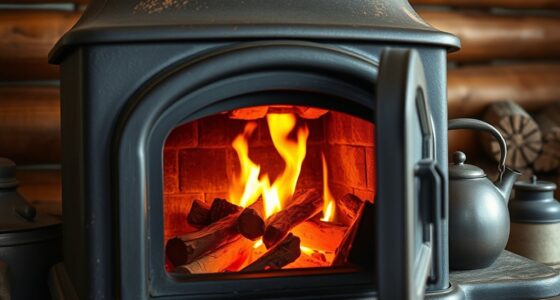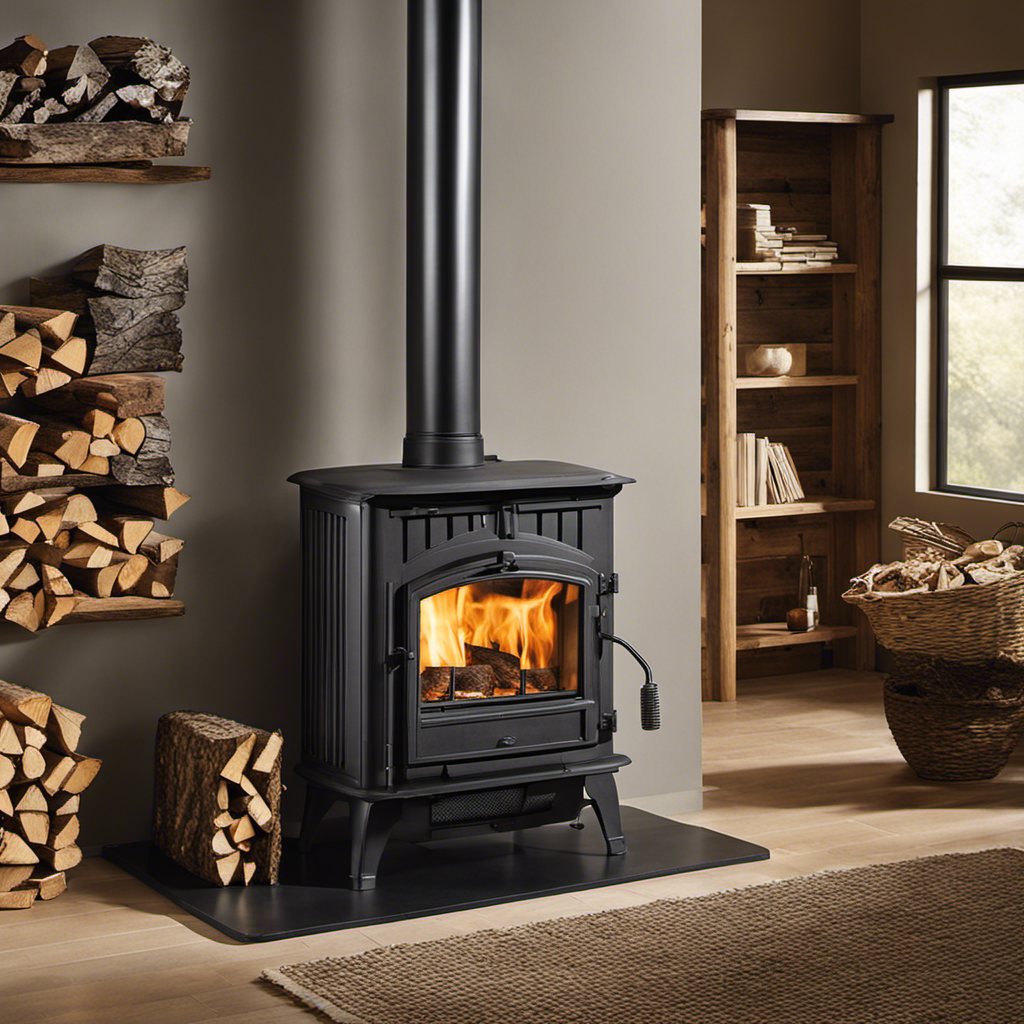
As a wood stove enthusiast, I have learned that the size of the firebox is more than just a basic measurement. It is the core and base of your heating system, impacting its performance and operation.
In this article, I’ll guide you through the process of determining the perfect fire box size for your wood stove. By understanding the importance of size, considering key factors, and making precise measurements, you’ll be able to choose a fire box that not only keeps you warm, but also ensures safety and efficiency.
Key Takeaways
- The fire box size determines the efficiency and effectiveness of a wood stove.
- Heating capacity and fuel efficiency are key factors in determining fire box size.
- Accurate measurements of the fire box dimensions are necessary.
- Adhering to local building codes and safety standards is crucial for fire box size regulations.
Understanding the Importance of Fire Box Size
I can see why fire box size is crucial for efficient wood stove operation. The fire box design and construction play a significant role in determining how well the wood stove performs.
The size of the fire box directly affects the amount of wood that can be burned at once and the heat output of the stove. A larger fire box allows for a larger wood load, resulting in longer burn times and more heat production. On the other hand, a smaller fire box requires less wood but may need more frequent reloading.

It’s essential to strike a balance between the fire box size and the heating needs of your space. Additionally, the fire box design should promote proper airflow for efficient combustion and minimize heat loss.
Overall, understanding and carefully considering the fire box size is crucial for optimal wood stove performance.
Factors to Consider When Determining Fire Box Size
When thinking about the fire box size for a wood stove, it’s important to consider several factors.
The heating capacity and fuel efficiency of the stove are two key factors that play a crucial role in determining the appropriate fire box size.
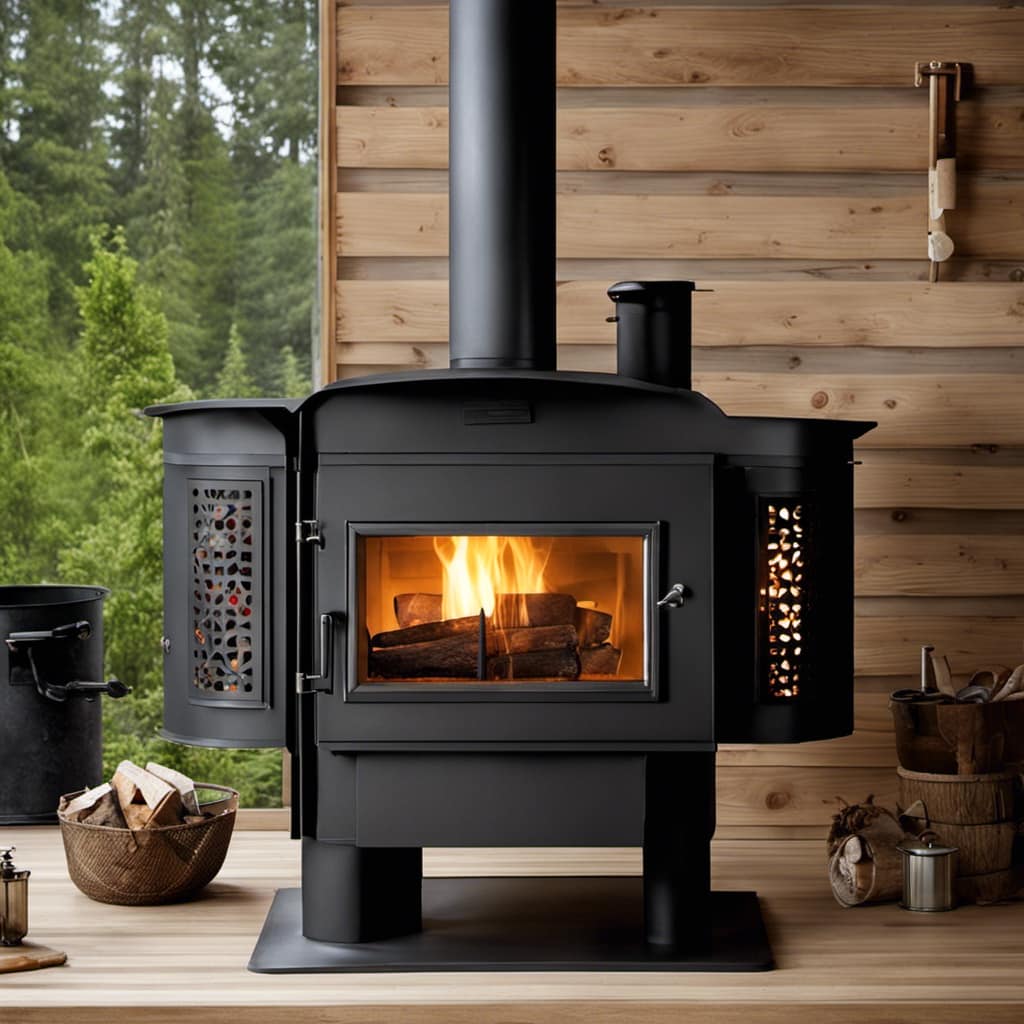
The heating capacity refers to the amount of heat the stove can produce, while fuel efficiency relates to how effectively the stove converts fuel into heat.
To ensure optimal performance, it’s essential to choose a fire box size that matches the heating capacity of the stove.
A larger fire box can accommodate more fuel, providing longer burn times and greater heat output.
On the other hand, a smaller fire box may be more suitable for those seeking better fuel efficiency.
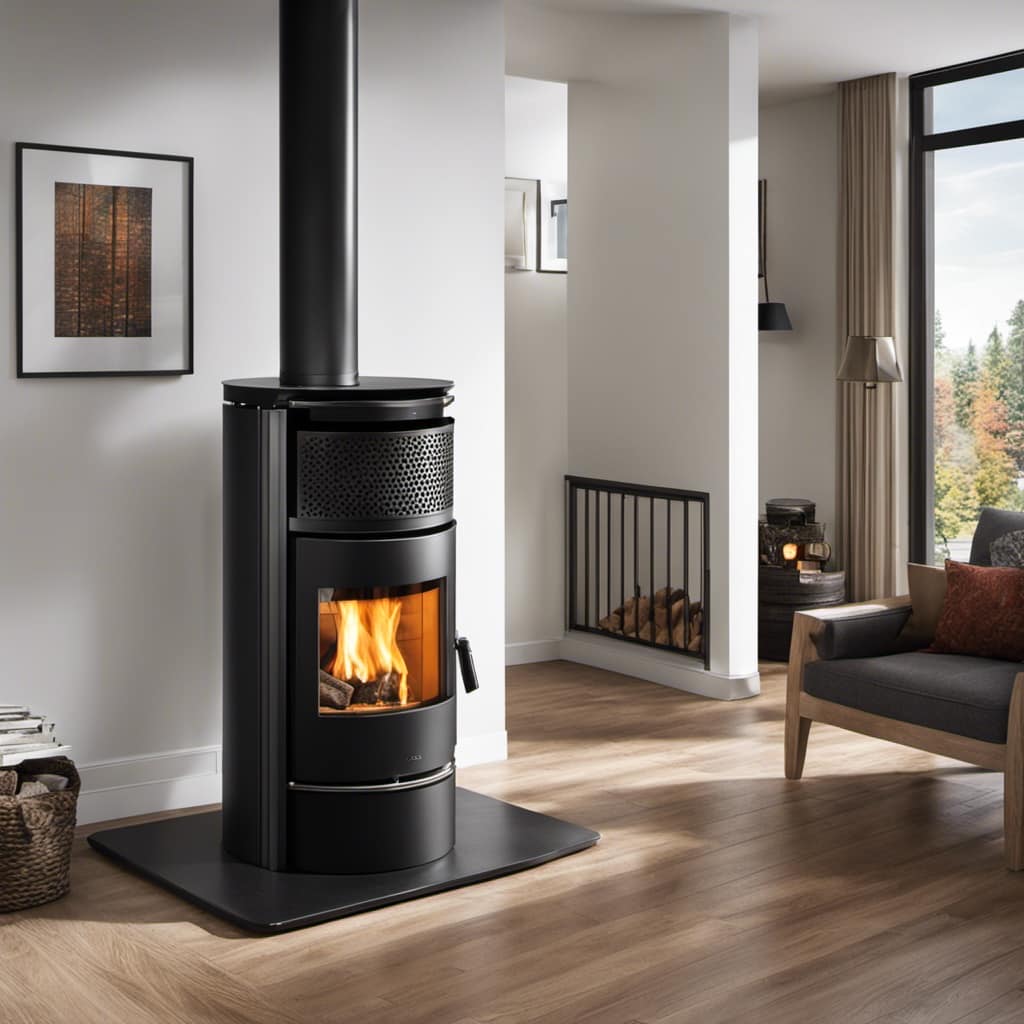
Measuring Your Wood Stove’s Fire Box Dimensions
To accurately measure my wood stove’s fire box dimensions, I’ll need a tape measure and a pen to record the measurements. The fire box is the area where the wood is burned, and its size plays a crucial role in determining the stove’s heating capacity.
To measure the fire box depth, I’ll place one end of the tape measure at the back of the fire box and extend it to the front. The fire box width can be measured by placing the tape measure from one side wall to the other.
Once I’ve these measurements, I can calculate the fire box capacity by multiplying the depth, width, and height of the fire box. These measurements are essential in calculating the ideal fire box size for your heating needs.
Now, let’s move on to understanding how to calculate the ideal fire box size for your heating needs.
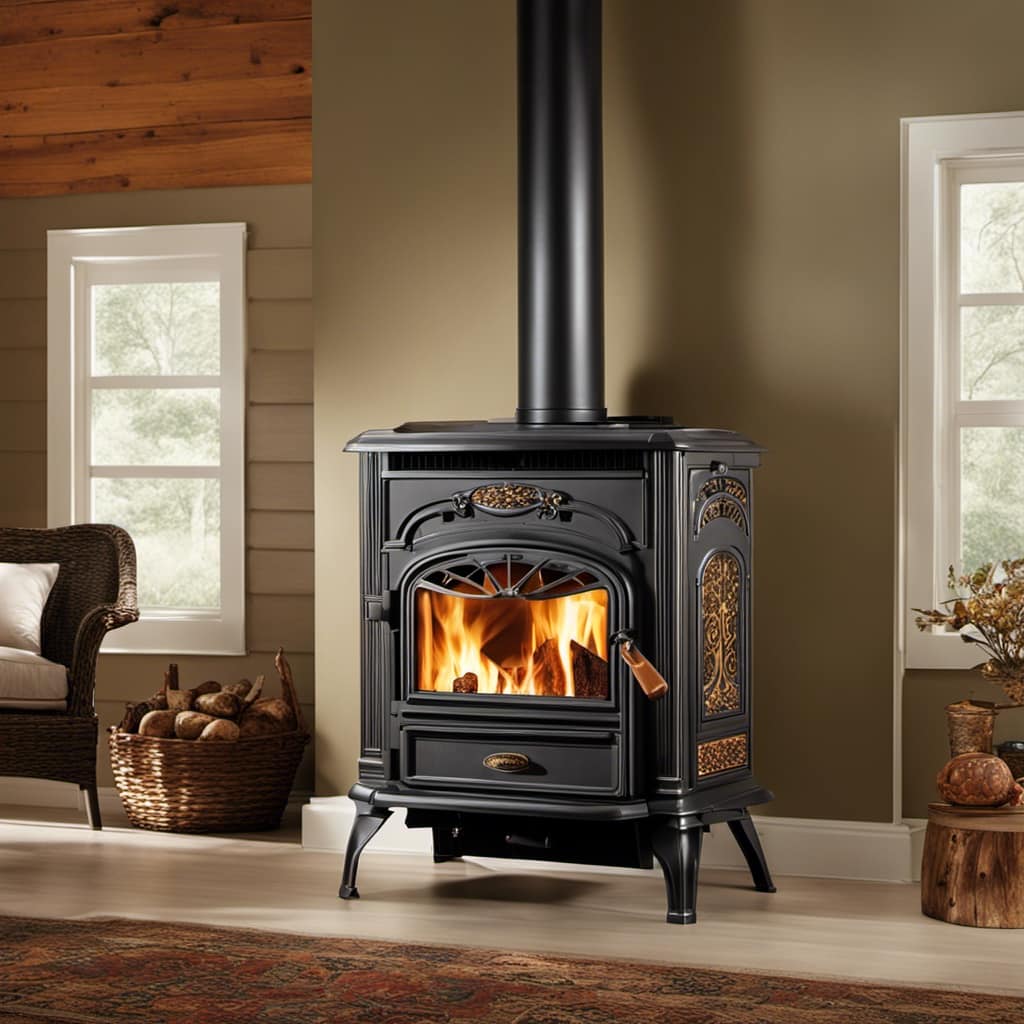
Calculating the Ideal Fire Box Size for Your Heating Needs
The ideal fire box size for my heating needs can be calculated by multiplying the measurements of its depth, width, and height. This calculation is essential for determining the amount of firewood required and maximizing heat output. By knowing the dimensions of the fire box, I can calculate its volume and then estimate the amount of firewood needed based on the wood’s density. This ensures that I’ve enough fuel to sustain a fire and keep my home warm for the desired period.
Additionally, having the right fire box size helps maximize heat output, as a smaller fire box may not generate enough heat while a larger one may waste energy. Therefore, by calculating the ideal fire box size, I can ensure that my wood stove operates efficiently and effectively.
Now, let’s move on to choosing the right fire box size for safety and efficiency.
Choosing the Right Fire Box Size for Safety and Efficiency
By calculating the dimensions of the fire box, I can ensure that my heating system is both safe and efficient.
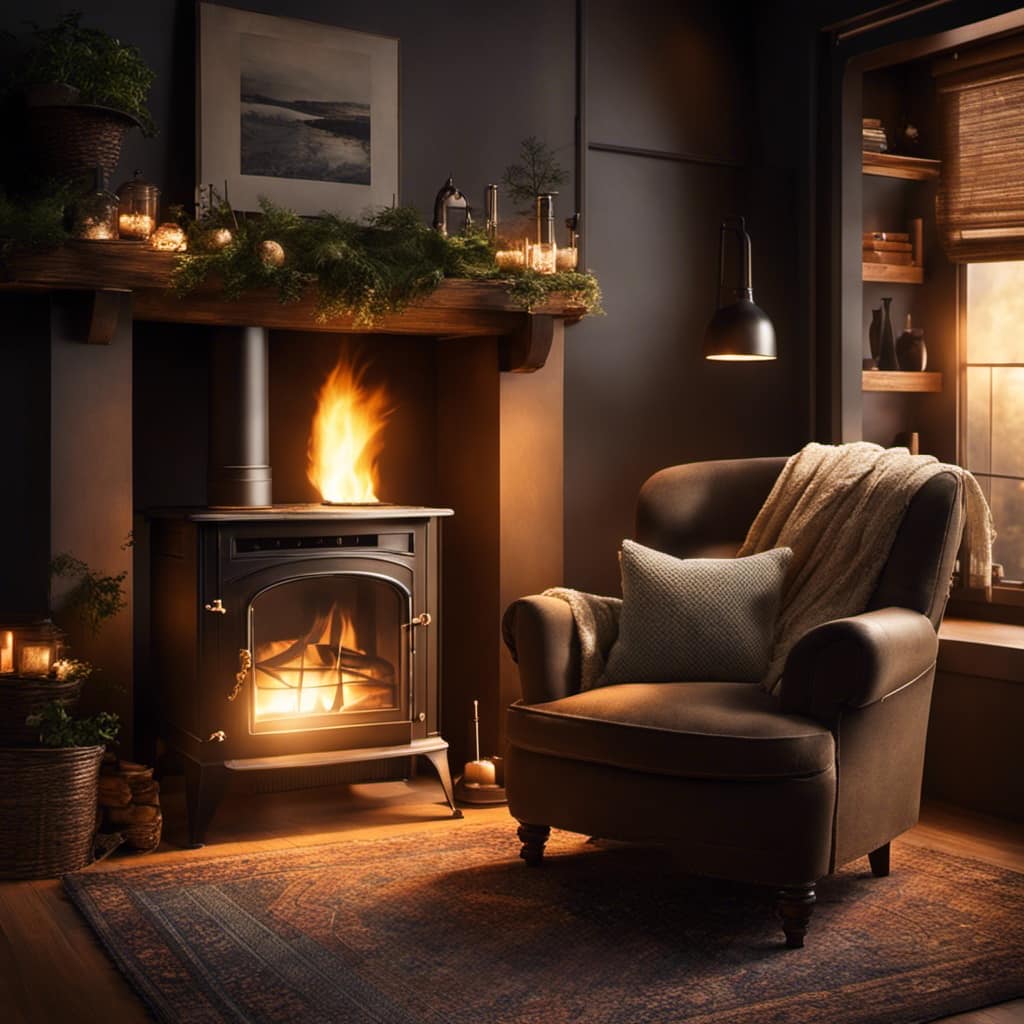
When it comes to fire box size regulations, it’s important to adhere to the guidelines set by local building codes and safety standards. These regulations often specify the minimum and maximum dimensions for fire boxes, taking into consideration factors such as combustion efficiency and heat output.
However, there are also benefits to having a larger fire box. A larger fire box allows for a longer burn time and can accommodate larger logs, reducing the need for frequent refueling. Additionally, a larger fire box can provide a more consistent heat output, resulting in improved heating efficiency and reduced energy consumption.
Frequently Asked Questions
Can I Use Any Type of Wood in My Wood Stove’s Fire Box?
I can use different types of wood in my wood stove’s fire box, but some are better than others. Hardwoods like oak and maple are the best types of wood for burning in a wood stove.
How Often Should I Clean My Wood Stove’s Fire Box?
I clean my wood stove’s fire box every 6 months to maintain optimal performance. Signs that it needs cleaning include excessive smoke, difficulty starting a fire, and a buildup of creosote. Here’s how to clean it properly.
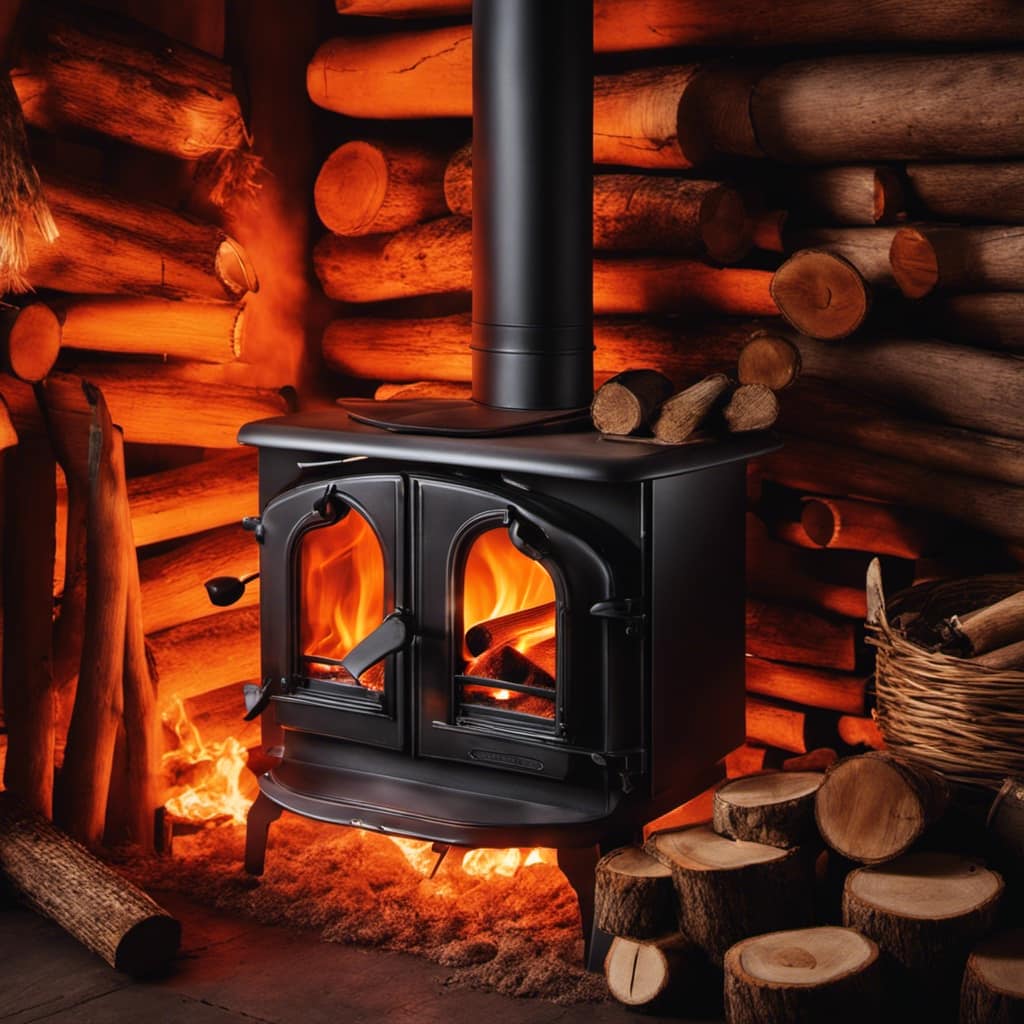
Can I Use a Wood Stove in a Mobile Home?
Yes, you can use a wood stove in a mobile home. It is important to ensure wood stove safety by following proper installation guidelines. Benefits of using a wood stove include cost savings and a cozy atmosphere.
Is It Necessary to Install a Chimney Liner When Using a Wood Stove?
Installing a chimney liner is not always necessary when using a wood stove. While it offers benefits like increased efficiency and reduced risk of chimney fires, there are alternative options available.
What Are the Potential Hazards of Having a Fire Box That Is Too Small or Too Big for My Wood Stove?
Having a fire box that is too small or too big for your wood stove can pose potential hazards. It is important to determine the proper fire box size to ensure safe and efficient operation.
Conclusion
In conclusion, determining the fire box size of a wood stove is crucial for ensuring safety and efficiency. By considering factors such as heating needs and measuring the dimensions of your wood stove’s fire box, you can calculate the ideal size.
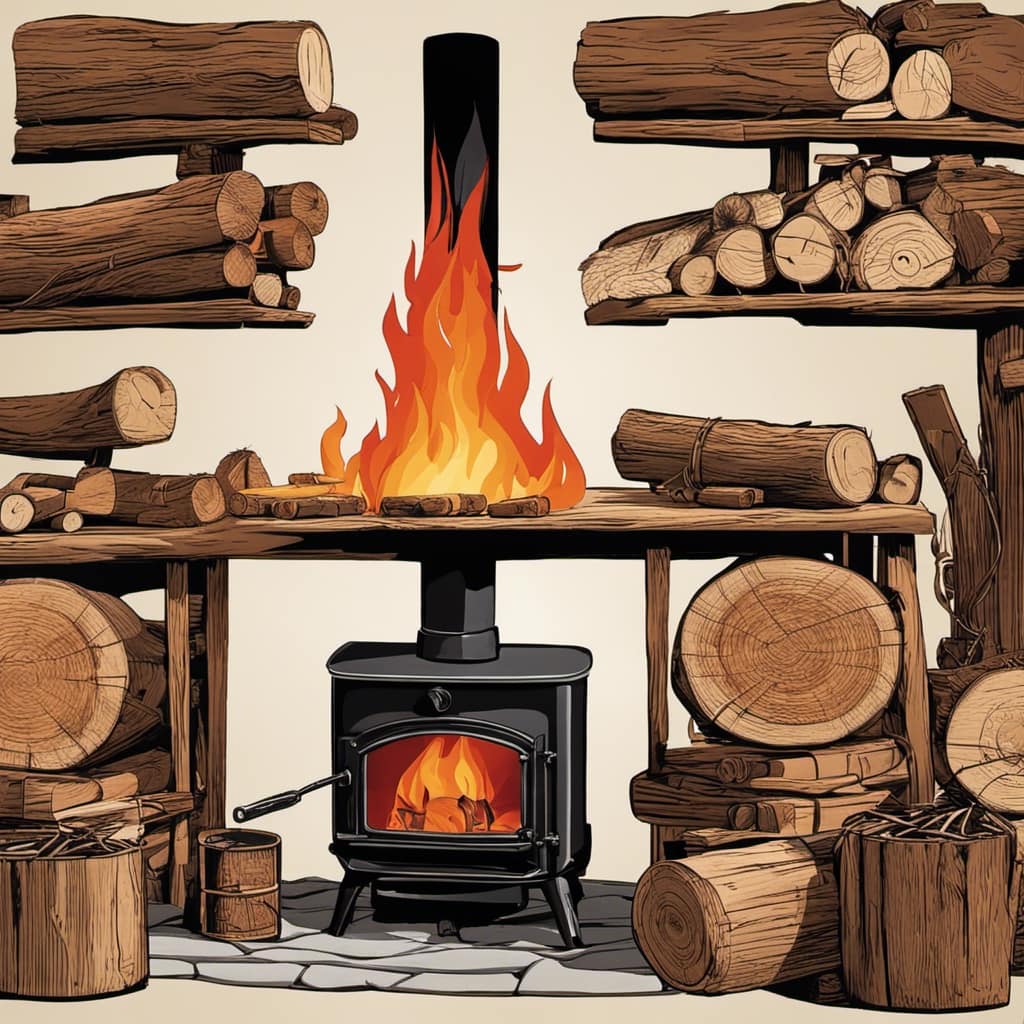
Choosing the right fire box size won’t only provide you with the warmth you desire, but also guarantee a safe and efficient heating experience.
Remember, when it comes to wood stoves, size does matter, so choose wisely to keep the home fires burning bright.
Growing up surrounded by the vast beauty of nature, Sierra was always drawn to the call of the wild. While others sought the comfort of the familiar, she ventured out, embracing the unpredictable and finding stories in the heartbeat of nature.
At the epicenter of every remarkable venture lies a dynamic team—a fusion of diverse talents, visions, and passions. The essence of Best Small Wood Stoves is crafted and refined by such a trio: Sierra, Logan, and Terra. Their collective expertise has transformed the platform into a leading authority on small wood stoves, radiating warmth and knowledge in equal measure.





